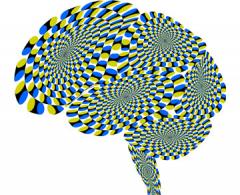
This Article From Issue
July-August 2020
Volume 108, Number 4
Page 194
During the first phase of this global pandemic of COVID-19, the staff members of American Scientist have prepared this long-planned special issue for publication, and I’d like to express my appreciation for how well they, our special issue editor Corey S. Powell, and the authors in this issue adapted to a rapidly changing and uncertain world situation. A lot of innovation was necessary, and the entire team rose to the occasion. It is fitting that this was the case, given the issue’s special theme: How art and science can work together to generate more insights than either could find alone.
Let’s kick off this special issue with some challenge questions. Is there really a divide between art and science? Are artists and scientists really on such different pages, each speaking a language the other cannot understand? Or has that trope become passé?
There certainly doesn’t seem to be any lack of willingness to work together on the part of artists and scientists. Data visualization expert Manuel Lima tells me, “In my experience, designers are eager to work on meaningful data and to collaborate on interesting discoveries and research. And scientists are very interested in people who know how to communicate, know how to sell an idea, and put together a presentation. That helps them, whatever they’re working on.” (See more from Lima on this topic in the First Person interview.)
So what stigma remains? Maybe it would help to have a clearer statement of a common goal. In this special issue, we explore an area that is vital to both art and science: creativity. Where does it come from, and how might we better encourage its growth? At the intersection of these two seemingly disparate fields, we can see examples in which artists and scientists have both shone brighter from working together, pooling their specialist approaches to ask questions and look at the world in ways their counterparts might not have done, producing an end result that might never have been achieved without this art-science collaboration. A different tool, a different example, or simply a different path of experience, can sometimes connect the dots to lead to a new destination. Cross-disciplinary science is known for producing innovative research, so going further afield increases the surprise factor.
In this issue, we look at topics such as art therapy (“How Art Can Heal”), using dance to teach robots to move (“Dancing With Robots”), training artificial intelligences to produce art (“Can AI Be Truly Creative?”), and engaging music education to boost a student’s overall success (“The Argument for Music Education”). We also explore how the brain produces creativity, from studying it as a network process (“Mapping the Creative Mind”), to how illusions can help us look at the world differently (“How Neural Constraints Set Us Free to Create”), to how the effects of illness on creativity can help us understand its cognitive origins (“What Parkinson’s Reveals About the Artistic Spark”). We’ve put together a wide-ranging look at the collaboration of art and science in these and many other articles in this special issue, to offer a broad understanding of just how much exciting research is going on in this area.
We hope that these articles inspire excitement, exploration, and self-reflection. If you find ways to be more creative, and if you are inspired to seek out collaborations with those outside your field, let us know.
Although it may be a while yet until it is considered safe to congregate in person—perhaps the rest of this year—we continue to encourage you to come together virtually and discuss any of this special issue with us and with other readers on our social media pages. We’re always interested in your feedback, and right now all forms of virtual connection are especially helpful.—Fenella Saunders (@FenellaSaunders)

American Scientist Comments and Discussion
To discuss our articles or comment on them, please share them and tag American Scientist on social media platforms. Here are links to our profiles on Twitter, Facebook, and LinkedIn.
If we re-share your post, we will moderate comments/discussion following our comments policy.